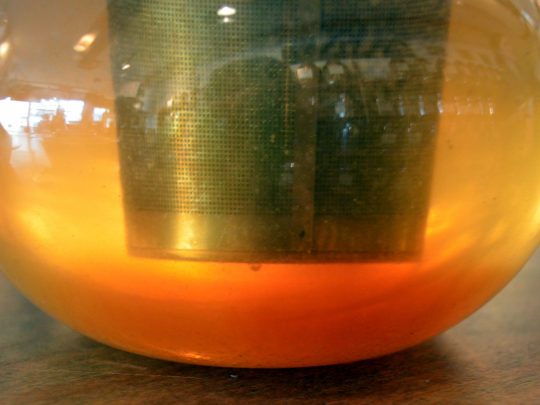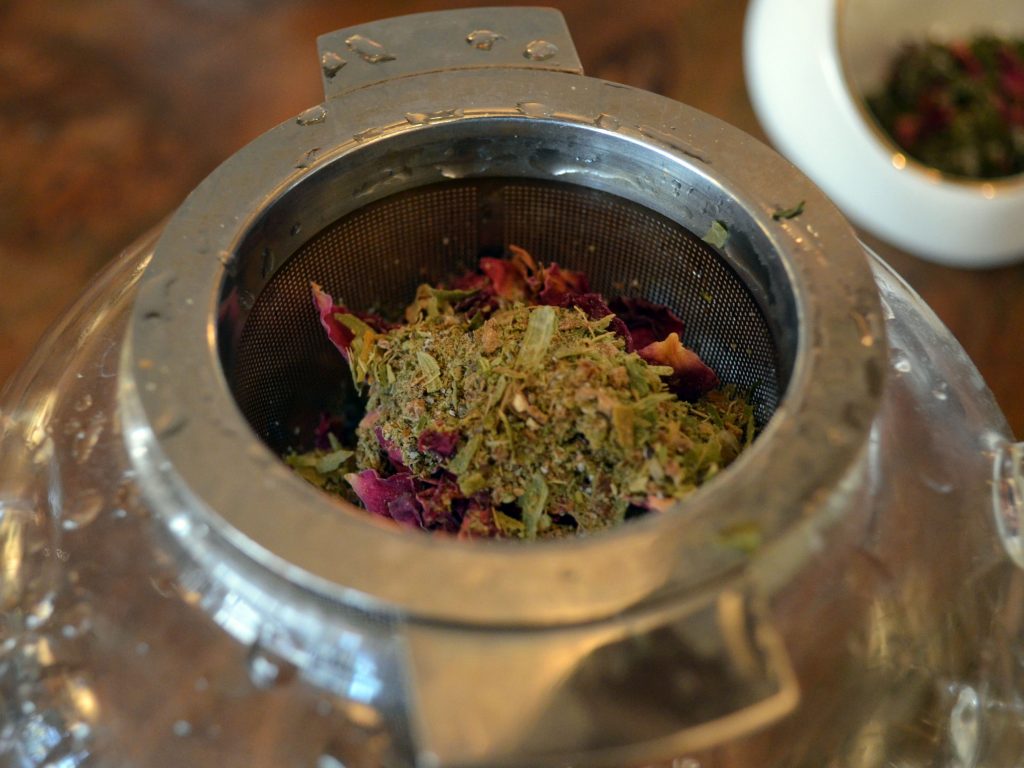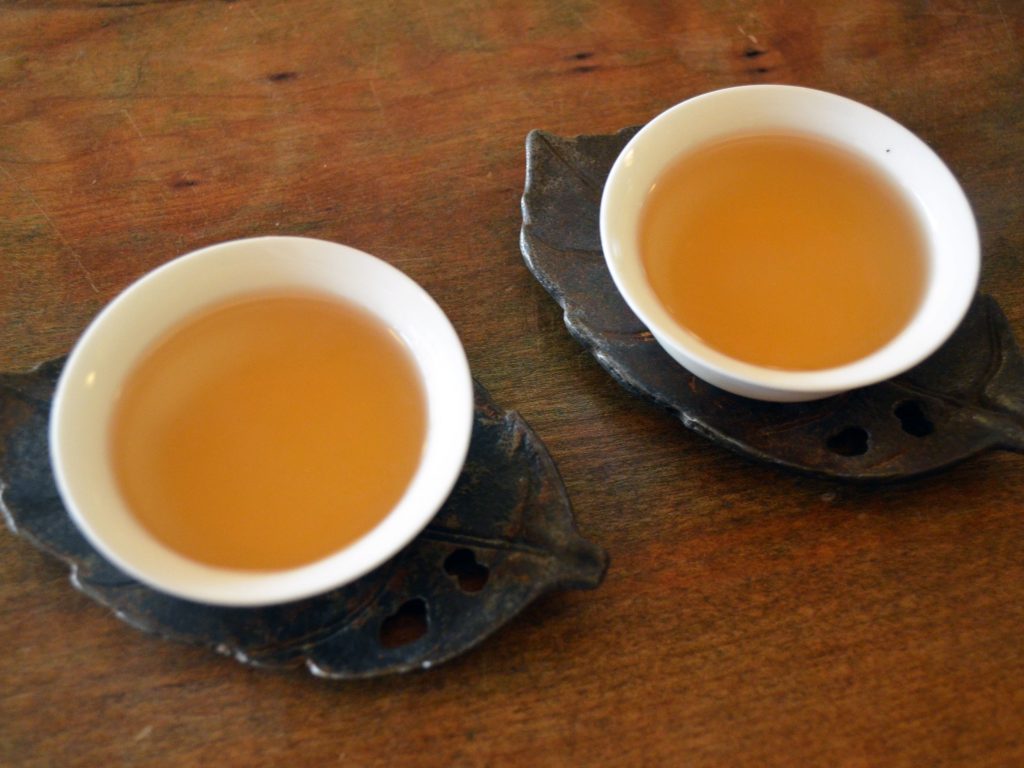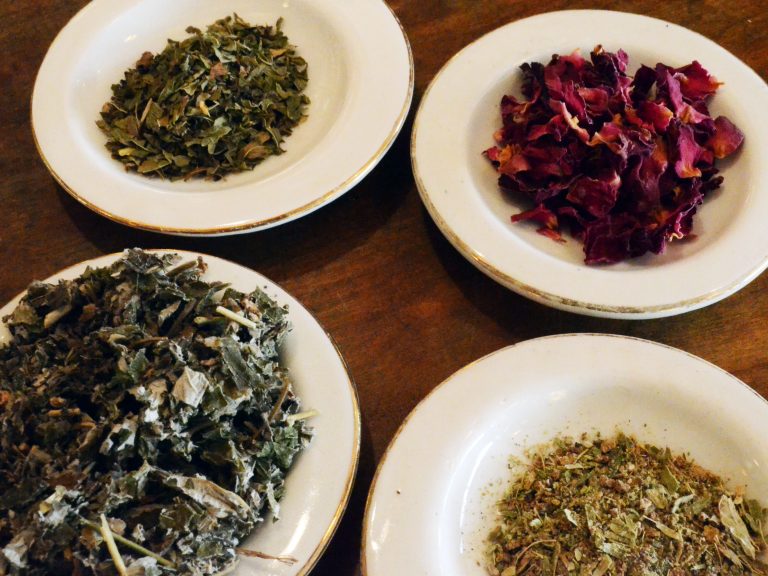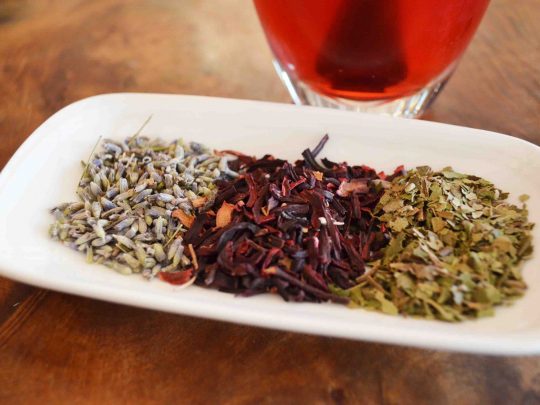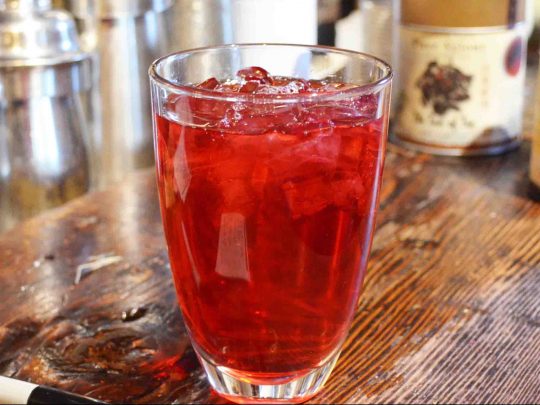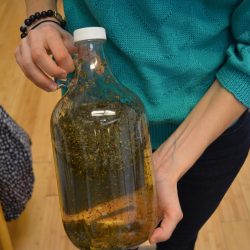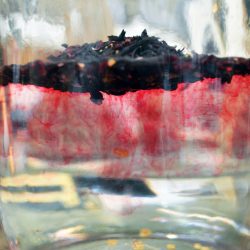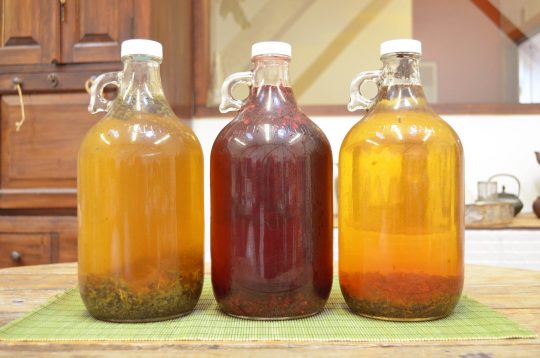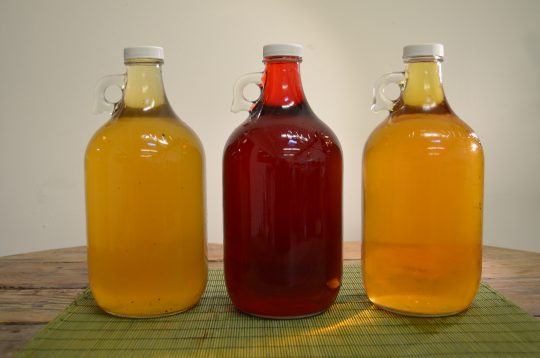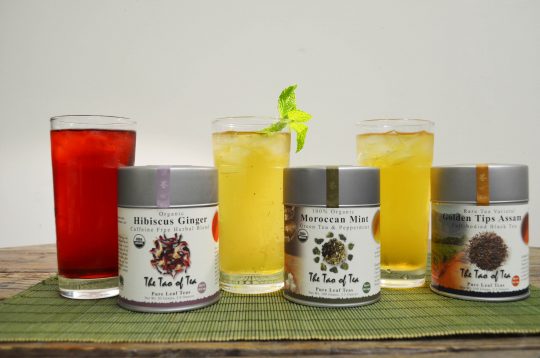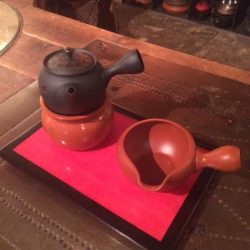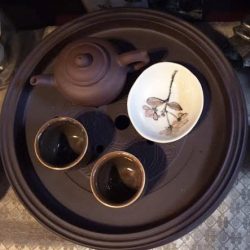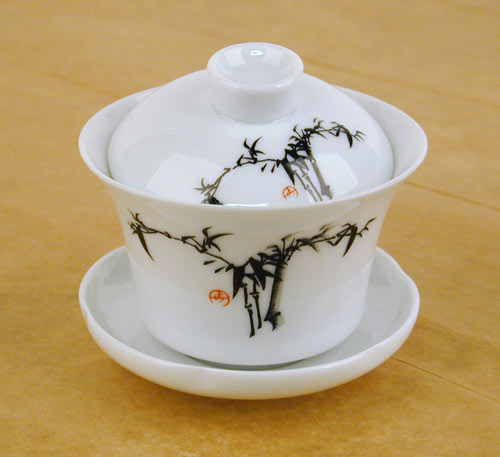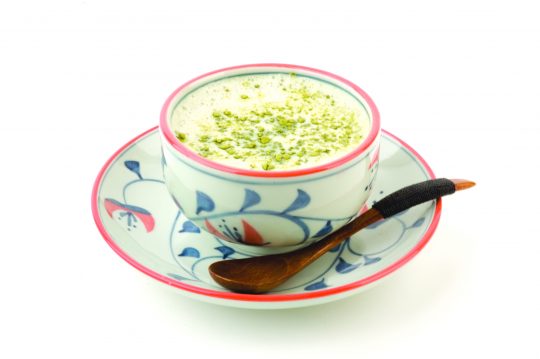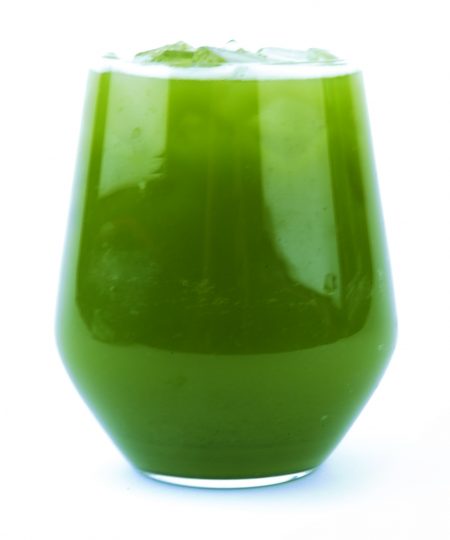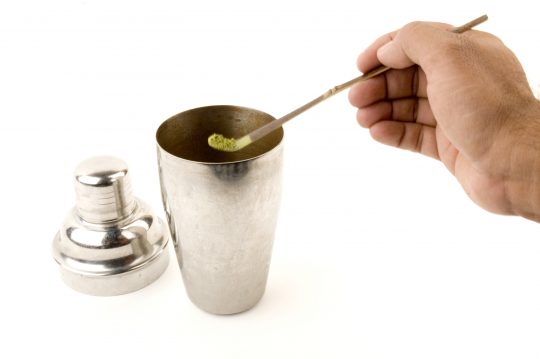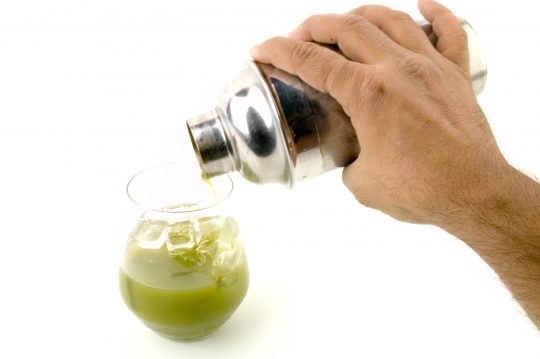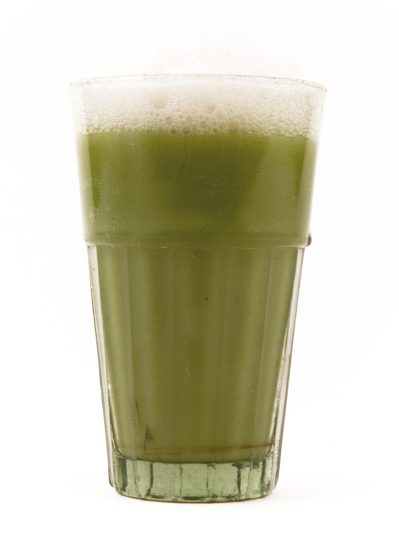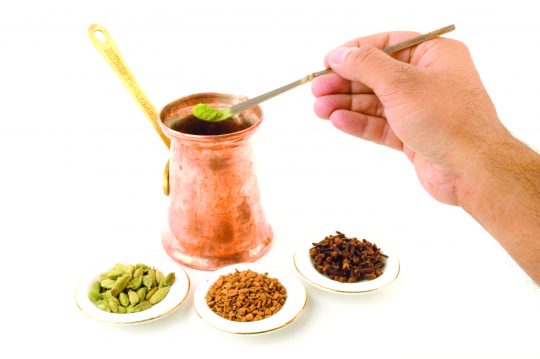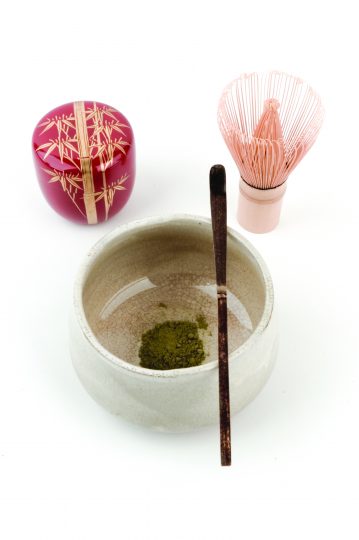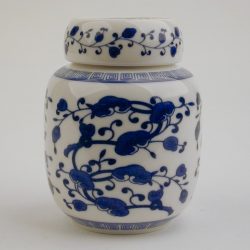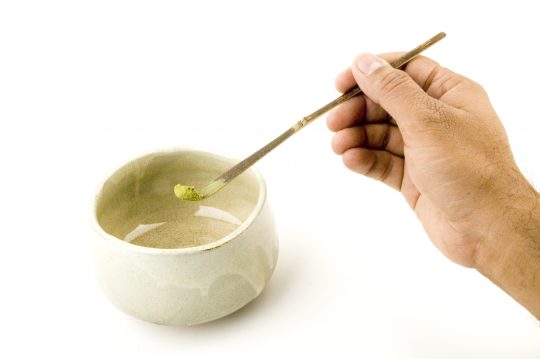Around The Tao of Tea, staff are frequently blending herbal concoctions of all kinds for their daily enjoyment — some are strong and pungent brews, the pot packed full of myriad ingredients, while others are a careful mixture of 2 or 3 complementary herbs. In any case, these creations always seem personal and individual, bearing the unique signature of the person making them.
For your own herbal experimentation, we recommend picking up a few staple herbs that you know you like (mint, licorice, lavender, etc.) and some others that intrigue you. Here is a window into what’s being brewed at The Tao of Tea lately in the herbal category:
Alicia’s Brew: Raspberry Leaf, Hand-Ground Fresh Cardamom, Red Rose Petals, Spearmint
Alicia says this blend was inspired by a health book she was reading that discussed the benefits of raspberry leaf, which some say is anti-inflammatory and positive for women’s health. She added some local honey for sweetness and indeed this was a tasty and nourishing infusion.
Sly’s Brew: Green Rooibos, Lemon Balm (base) and Echinacea, French Verveine, Licorice, Cinnamon (accents).
Sly uses Green Rooibos and Lemon Balm as the base for a lot of his herbal infusions. “The Lemon Balm coats the tongue and is kind of calming, whereas the Green Rooibos tastes grassy and alive.” From there, he chooses other herbs to accent this blend, depending on what flavors or benefits he is looking for that day. In this blend, the cinnamon bark chips and licorice add a nice natural sweetness to the infusion.
Matt’s Iced Brew: Hibiscus, Lemon Myrtle and Lavender.
Also known as “Heaven’s Blend” (named by Sonam in our teahouse), Hibiscus, Lemon Myrtle and Lavender combine to make a tasty iced tea. Matt created this blend as the weather started heating up this spring; it was so well-liked that we started sharing it as a special. We find that the lavender offers a cooling and sweet contrast to the bright tartness of hibiscus. The lemon myrtle adds a gentle citrus quality that ties it all together.
Suggested Reading:
The Yoga of Herbs: An Ayurvedic Guide to Herbal Medicine by Dr. David Frawley and Dr. Vasant Lad features most of the herbs we carry at The Tao of Tea and gives great insight into their uses.
More Staff Recipes:
Jennifer’s Brew: Ginkgo, French Verveine, and Licorice.
Wade’s “Ultimate Blend”: Lemon Balm, French Verveine, Vana Tulsi, Red Raspberry Leaf, Lemon Myrtle and a little Spearmint.
Melissa’s “Tea Room Favorite”: Purple Leaf Tulsi and fresh grated ginger.
